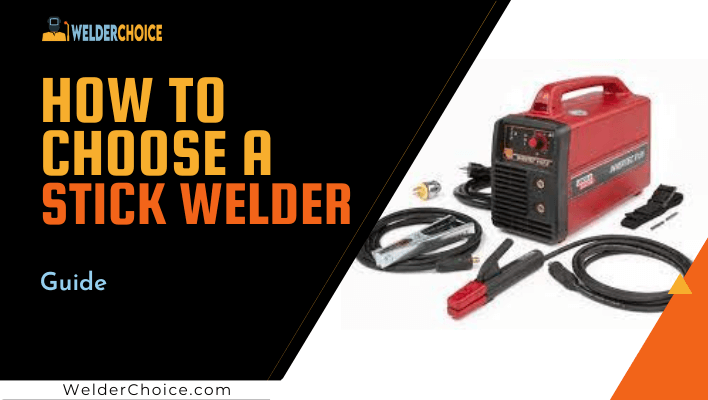This post solve the query about “How to Choose a Stick Welder” Have you made up your mind to start your home renovation project yet? Or do you think you need a new welding stick for your company? If the answer is yes, you should make sure you have all the information you need before making a purchase to serve your needs.
Given the wide range of manufacturers and product types available, you can decide to choose a product that is inadequate for the job. Due to the high expense of items, you must finish this checklist as soon as possible. As a result, you can be confident that the best stick welder you can afford will offer exceptional value and applicability for the price you will pay.
A Useful Stick Welder Purchasing Guide
Whether you are aware of it or not, there are a number of things to consider when purchasing a stick welder. Along with affecting the caliber of your work, these have a big impact on your expenses and general safety. Apply this advice wisely.
Select The Type You Need
To assert that your stick welding equipment is dependable and built for the job, you must be clear about what you need. You must choose between an inverter and a transformer because there are two different types of stick welders.
If you are a hobbyist or a freelance welder, pick the inverter type. It is lighter because this weighs 20 pounds less than the alternative. This offers more mobility and makes moving jobs easier, but it is more expensive than other options.
For those taking on difficult construction jobs, the transformer type is a far better option. It is built to tolerate higher power-intensive applications. Even if this aspect makes it bigger and more likely to use more electricity, it still outperforms the other type in terms of cost because it is more affordable.
Set It To Your Preferred Current
If you want smoother arcs and are planning to weld vertically or overhead, choose direct current, usually referred to as DC. You have more freedom at work because this only needs one direction and works on both negative and positive polar.
If you don’t have any preferences for the type of arcs you want, an AC will do. The arcs are not the smoothest, but it accomplishes the goal. It has the capacity to work in reverse at various times.
The finest current types for those who enjoy variety in their work are AC and DC currents. This gives you the flexibility to operate and create different arc types as needed. You must first make sure that your gadget can produce the required power at this voltage.
Know The Power Output
A welder needs to be running at 100 amps or higher. This is because the concept is straightforward: a welding stick with more amps can finish the job more rapidly. With that said, it follows that the lesser your amps are, the slower you will labour to complete the assignment. Like all other types of welding, stick welding is very important.
Specify The Voltage Of Your Input With Detail.
This has to do with the type of application you need. Since most amateurs’ equipment doesn’t require much electricity to operate, they can use 115 volts. While individuals who require more power frequently choose 230 volts, keep in mind that this may require a solid power outlet. You shouldn’t let that deter you from selecting both though, especially with dual-voltage welders, as it is a choice.
Know Their Cycle Of Duty
There is a maximum operating period for every machine before it needs a break or a chance to cool down. This is determined by your machine’s output power. On a machine with a 50% duty cycle, for example, a 10 minute session completed would allow you to work for an extra 5 minutes before the cool down period. The general guideline is that the bigger your output power, the smaller your duty cycle will be.
Safety
You must be familiar with the controls and safety precautions on your equipment in addition to the fundamentals. A great example is a duty cycle indicator that alerts you when a cycle is about to terminate. When you need to switch the system off, this glows to prevent overheating.
Another safety element to watch out for is thermal overload protection. This acts as a form of safety net and a backup plan in the event that the duty cycle indicator malfunctions or you forget to utilize it. This works by spinning the machine on its own after each duty cycle. This is essential because, even if you forget to turn your computer off, it will still avoid overheating.
Conclusion
When you rapidly explore an online store or enter a hardware store, buying a stick welder may seem easy. The importance of the aforementioned requirements is highlighted because they have the power to improve or degrade your welding experience. You can up spending more time than necessary or with a weld that isn’t as nice as you had planned if you can’t find the ideal one for your project.
Therefore, keep those recommendations in mind when making a stick welder purchase to avoid compromising and parting with your money for worse quality and performance. To do yourself a favor, make sure you buy the appropriate machine for the job at the appropriate price and with the appropriate specifications.
FAQs

With 8 years of experience a senior welding instructor and safety equipment researcher and writes articles, reviews and guidelines on helmets and other welding and safety gears at Welder Choice, and other written works have been published in various publications.
